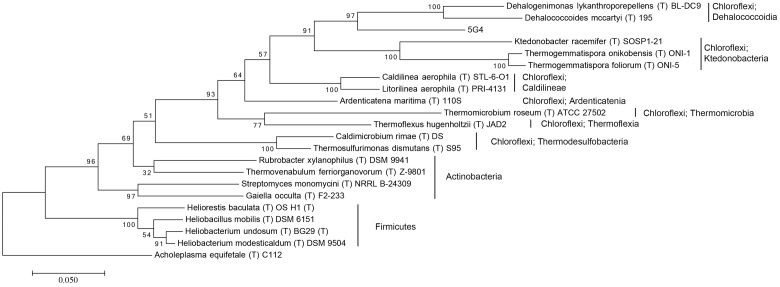FIGURE 2.
Molecular phylogenetic analysis of 5G4 by Maximum Likelihood method. The evolutionary history was inferred by using the Maximum Likelihood method based on the Tamura–Nei model. The tree with the highest log likelihood (-11781.7674) is shown. Initial tree for the heuristic search were obtained automatically by applying Neighbor-Join and BioNJ algorithms to a matrix of pairwise distances estimated using the MCL approach, and then selecting the topology with superior log likelihood value. The tree is drawn to scale, with branch lengths measured in the number of substitutions per site. The analysis involved 22 nucleotide sequences. All positions containing gaps and missing data were eliminated. There were a total of 1,244 positions in the final dataset. Evolutionary analyses were conducted in MEGA7. The phylogeny was tested by 100 of bootstrap replications.

